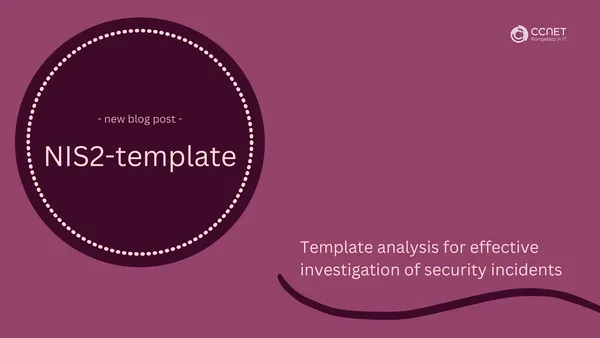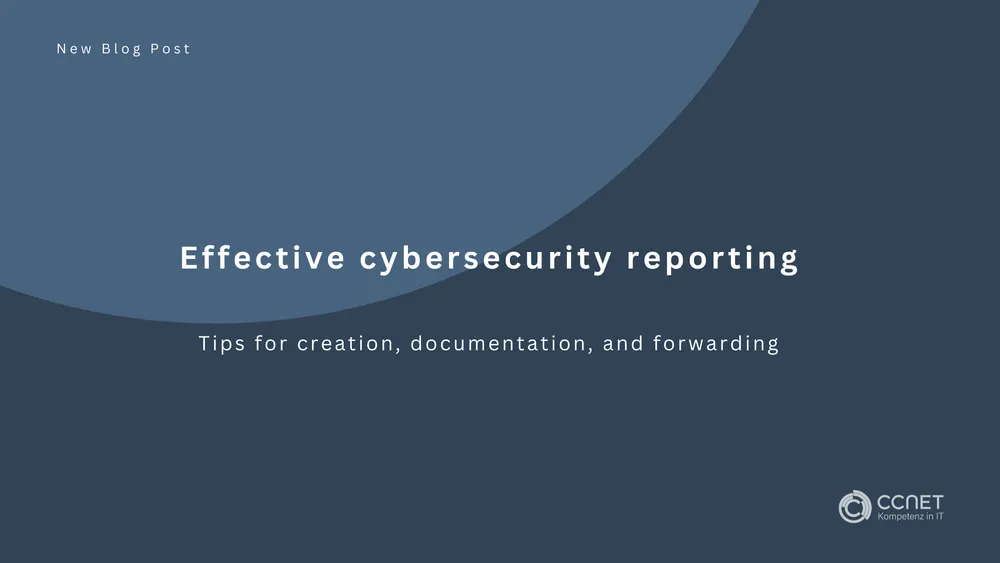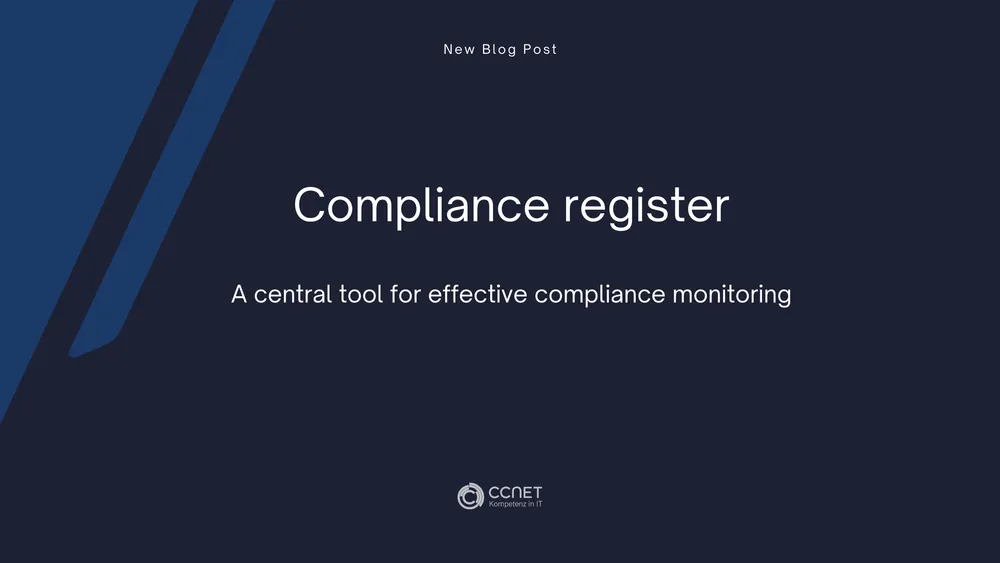
CCNet
Mar 3, 2025 • 2 min read

Template analysis for effective investigation of security incidents
NIS2 Template: Standard Analysis for Effective Investigation of Security Incidents
Purpose of the Analysis
The method serves to conduct a structured investigation of security incidents, aiming to uncover causes, document the course of the incident, and derive preventive measures to prevent future incidents.
Scope
This analysis method is used for security-relevant incidents affecting IT systems, networks, applications, or data.
Analysis Process
- Initial Incident Recording
The Incident Response Team (IRT) promptly records the incident and creates an initial description. Affected systems, users, and data are identified, and documentation is created in the central incident register, including details such as time and involved resources. - Collection of Data and Evidence
The IT Security Officer collects relevant data, logs, and other evidence related to the incident while ensuring the integrity of the data for forensic analysis. - Forensic Analysis
Led by the IT Security Officer, possibly in collaboration with external experts, a detailed examination of the evidence is conducted. This includes analyzing the causes of the incident, identifying vulnerabilities, and the methods used by attackers. The analysis also includes assessing damage, such as data loss and system impairment. - Identification of Vulnerabilities
The IT Security Officer identifies the specific security gaps or process failures that contributed to the incident and documents their severity. - Impact Assessment
The impact of the incident on security, business operations, data integrity, and the company's reputation is assessed. A financial assessment is made if relevant. - Development of Countermeasures
The IT Security Officer, in consultation with management, develops countermeasures to address the vulnerabilities. A plan is created to strengthen the security infrastructure and prevent future incidents. - Creation of Final Report
All gathered information, analyses, and proposed countermeasures are compiled into a detailed final report. This report includes the incident description, analysis results, identified vulnerabilities, immediate actions taken, and recommendations for future prevention. - Presentation and Approval of the Report
The final report is presented to management and relevant stakeholders. The results are discussed, and the next steps are determined according to the report's recommendations. The report is then approved and archived.
Documentation and Follow-Up
All analysis steps and decisions are documented. The implementation of the recommended measures is tracked, and their effectiveness is evaluated in future reviews.
Roles and Responsibilities
- IT Security Officer: Leads the analysis, creates the final report, coordinates forensic analysis, and develops countermeasures.
- Incident Response Team (IRT): Assists in recording the incident and collecting evidence.
- Management: Oversees the analysis and approves the proposed measures.
Reporting
Regular reports on the incident analysis and its outcomes are presented to management, serving as a basis for future security measures and the continuous improvement of the IT security strategy.
Conclusion
A thorough analysis of security incidents is essential to effectively identify causes and vulnerabilities and to derive preventive measures. The structured approach to investigation allows for comprehensive documentation of the incident and the development of targeted actions to strengthen the security infrastructure. Through regular reports and follow-up on implemented measures, the company ensures that future risks are minimized and the IT security strategy is continuously improved. This significantly contributes to the resilience and security of the company’s data and systems.


